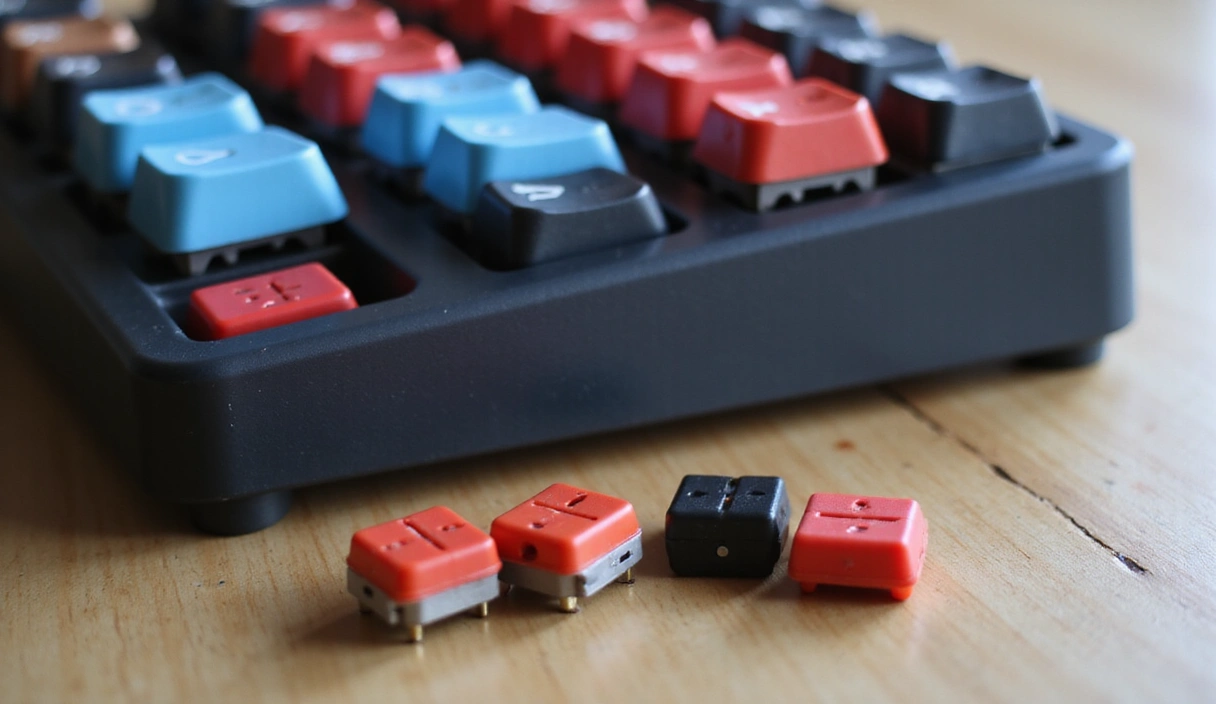The Ultimate Guide to Choosing Your First Mechanical Keyboard

Published on October 26, 2023
Welcome, aspiring keyboard enthusiast! The world of mechanical keyboards is vast, vibrant, and incredibly rewarding. If you're tired of mushy membrane keyboards and seeking a typing experience that's both tactile and auditory satisfying, you've come to the right place. This guide will walk you through everything you need to know to pick your very first mechanical keyboard.

Understanding Mechanical Switches: The Heart of the Keyboard
At the core of every mechanical keyboard lies its switches. These small, intricate mechanisms determine the feel, sound, and actuation force of each keypress. They are broadly categorized into three types:
- Linear Switches: These switches have a smooth, consistent keystroke without any tactile bump or audible click. They are often preferred by gamers for their fast, unobstructed actuation. Examples include Cherry MX Red and Gateron Yellow.
- Tactile Switches: Offering a noticeable "bump" in the middle of the keystroke, tactile switches provide feedback that you've activated the key without an audible click. They are popular among typists who appreciate the confirmation of a keypress. Cherry MX Brown and Holy Pandas are common examples.
- Clicky Switches: For those who love auditory feedback, clicky switches produce a distinct "click" sound in addition to a tactile bump. They are often associated with the classic mechanical keyboard experience. Cherry MX Blue and Kailh Box Jades are well-known clicky options.
Choosing the right switch is a highly personal decision. It's often recommended to try a switch tester, a small board with various switches, before committing to a full keyboard.
Keyboard Sizes and Layouts: Finding Your Perfect Fit
Mechanical keyboards come in a variety of sizes and layouts, each catering to different needs and preferences.
- Full-size (104/105 keys): Includes a number pad, function row, and navigation cluster. Ideal for data entry specialists or users who frequently use the numpad.
- Tenkeyless (TKL - 87/88 keys): Removes the number pad, resulting in a more compact design that saves desk space and improves ergonomics by bringing your mouse closer.
- Compact (60%, 65%, 75%): These layouts significantly reduce the keyboard's footprint by removing function rows, navigation clusters, and even arrow keys, often requiring function layers to access these commands. Popular among minimalists and gamers.
"The right keyboard size isn't just about aesthetics; it's about optimizing your workflow and comfort."
Keycaps: Customization and Aesthetics
Keycaps are the plastic covers on top of your switches. They greatly influence the look and feel of your keyboard. Materials like ABS (Acrylonitrile Butadiene Styrene) and PBT (Polybutylene Terephthalate) are common, with PBT generally being more durable and resistant to shine.
Profiles like Cherry, OEM, SA, and DSA offer different heights and shapes, dramatically changing the typing experience. Custom keycap sets are a popular way to personalize your keyboard and express your style.

Connectivity and Features
Consider how you want to connect your keyboard. Most mechanical keyboards are wired (USB-C is common), offering reliable, low-latency performance. Many modern keyboards also offer wireless options via Bluetooth or 2.4GHz dongles, providing greater flexibility.
Other features to look for include:
- RGB Lighting: Customizable backlighting for aesthetics and visibility in low light.
- Hot-swappable Sockets: Allows you to change switches without soldering, making customization and maintenance much easier.
- Programmable Keys/Macros: Software support for remapping keys or creating complex command sequences.
- Build Quality: Materials like aluminum or steel frames offer greater durability and a premium feel compared to plastic.
Starting Your Journey
Choosing your first mechanical keyboard can feel overwhelming, but by breaking it down into switches, size, keycaps, and features, you can narrow down your options. Don't be afraid to experiment, read reviews, and watch videos. The mechanical keyboard community is incredibly welcoming and a great resource for newcomers.
Ultimately, the "best" mechanical keyboard is subjective and depends entirely on your personal preferences and intended use. Enjoy the journey of discovery, and prepare to elevate your typing experience!
Comments
GamerGuy88
October 27, 2023 at 10:30 AM
Great guide! As someone just getting into mechanical keyboards, this was super helpful. I'm leaning towards tactile switches for typing.
TypistPro
October 27, 2023 at 1:15 PM
Excellent breakdown of switches and layouts. I've been using a TKL with Cherry MX Browns for years, wouldn't trade it for anything!